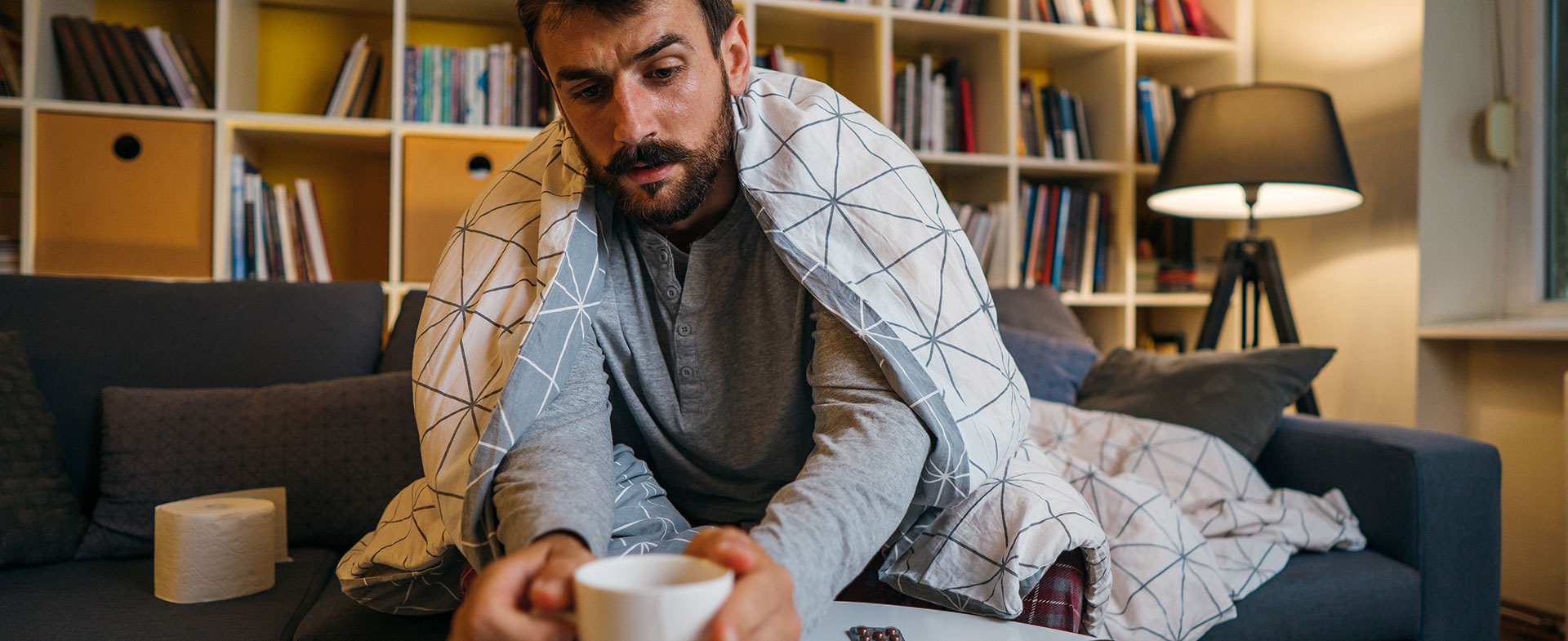While there are a few medications on the market that can treat COVID-19, the most effective treatment is Paxlovid, an antiviral developed by Pfizer that is 89% successful in reducing severe illness. Paxlovid has received emergency use authorization from the Food & Drug Administration (FDA) and is currently being provided by the government for free.
“With Paxlovid, you take three pills, twice a day, for a total of five days," says Rachel Kenney, a pharmacist at Henry Ford Health. "It helps your body fight off the virus, preventing it from replicating before it becomes serious.”
Paxlovid is actually a combination of two drugs: nirmatrelvir, which stops COVID-19 from replicating, and ritonavir, which helps nirmatrelvir do its job. Nirmatrelvir was previously used in an antiviral treatment for HIV/AIDS.
For Paxlovid to be effective, you have to start taking it within five days of experiencing symptoms. That means, after you receive a positive COVID-19 test, get a prescription as soon as you develop a cough, fever, muscle aches—any of the common symptoms associated with COVID-19. The sooner you start taking it, the better. But who should take Paxlovid? And what are the side effects? Kenney shares everything to know.
Who should take Paxlovid?
The FDA has authorized Paxlovid for anyone age 12+ who is at high risk for developing a severe case of COVID-19. “If you’re pregnant, if you’re obese, if you’re older, if you have comorbidities or if you have underlying health issues, you should talk to your doctor about taking Paxlovid,” says Kenney.
Paxlovid may not be an option for you if you have severe kidney disease or need dialysis. If, however, you’re vaccinated and boosted, young and healthy, you likely won’t need Paxlovid and the virus will clear itself on its own.
What are the side effects of Paxlovid?
The most common side effects are diarrhea, nausea, vomiting and an altered sense of taste, or dysgeusia. That’s what makes Paxlovid difficult to swallow: many people experience a metallic or bitter taste right after—or even a few hours after—taking Paxlovid.
“The exact reason why Paxlovid causes a metallic or bitter taste is unknown for now,” says Kenney. “Some say it’s because we have so many more bitter taste receptors on our tongue than sweet, salty, sour or savory—and the two medicines included in Paxlovid are both bitter substances.”
That said, if you’re at high-risk for COVID-19, the bitter taste is worth the benefit of taking Paxlovid.
Does Paxlovid have any drug interactions?
Yes. Not everyone who is high-risk for COVID-19 is a candidate for Paxlovid because it can interact with certain drugs. “There are some common drugs that a lot of people take—like statins and other cholesterol-lowering drugs—where we can work with your doctor to mitigate those issues,” says Kenney. “But there are other drugs that we can’t work with. If you’re on antiarrhythmic drugs because of a heart arrythmia, you can’t take Paxlovid. In any cases with serious drug interactions, we will consider you for monoclonal antibody treatment.”
Monoclonal antibodies bolster your immune system to fight off COVID-19. They are infused into the body via an IV and circulate through the blood to attack the virus. Monoclonal antibody therapy provides immediate (yet temporary) short-term immunity from COVID-19. Given within 10 days of the onset of symptoms, monoclonal antibody therapy is 70% to 85% effective in reducing the severity of your illness. It's recommended as second-line therapy for those who can't take Paxlovid.
How does Paxlovid compare to other COVID-19 treatments?
Kenney says that Paxlovid is currently the best COVID-19 treatment because of its efficacy and ease of use. “There’s an FDA-approved antiviral drug called Remdesivir, but it requires patients to receive IV therapy for three days,” she says. “With Remdesivir, there’s also slow uptake from insurance companies. So it’s just more challenging to receive than Paxlovid, which is a pill that you can take at home.”
The last treatment that’s available is an antiviral pill called Molnupiravir, which has received emergency use authorization from the FDA. “It can be considered for people who can’t take any of these other drugs,” says Kenney. “It has a more modest benefit as far as risk reduction--and more safety limitations. For example, you have to be at least 18+ to take it and women who are pregnant cannot take it.”
Paxlovid can sometimes cause a “rebound effect.” Do we know why this is?
During Pfizer’s clinical trial, 2% of patients felt better while taking Paxlovid, but experienced symptoms after completing treatment. “We’re trying to figure out why this is and what the next course of action would be for these people,” says Kenney. “The good news is that rebound symptoms seem to be mild.”
For more information about treatment for COVID-19, visit henryford.com/coronavirus/covid19-symptoms-testing-treatment/treatment.
Rachel Kenney, PharmD, BCPS-AQ ID, is a pharmacy specialist at Henry Ford Hospital.



